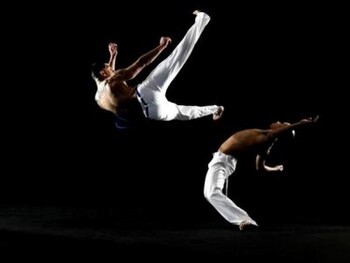Capoeira

Capoeira is not simply a martial art but is also a dance. It was practised in Brazil originally by those Africans who were enslaved and because they were forbidden to fight at all by those in power, consider, RC Scale Boats these early Capoeirists hid the sheer power try, RC Slope Gliders of this style through dance. Slaveholders did not feel that the Capoeira was a threat though as the ‘dance' was accompanied by the berimbau, a unique percussion instrument and the atabaques (drums) and appeared to be non-aggressive. Even in today's modern society, music is still very central to the art and it generally occurs within a circle with singers and musicians accompanying them.
The movement is considered rhythmic with the two players (they are not called martial artists) attacking and counter-attacking without ever striking the other.
The first Capoeira academy was opened in 1932 after efforts by the government were increased to promote it as a Brazilian sport. The style was changed significantly at that time and the more' ritualistic' aspects of Capoeira were dropped for a more aggressive fighting style. The new style was called ‘Capoeira Regional'.
Nine years later in 1941, Mestre Pastinha opened his own school and this school then began to teach the more traditional style renamed as ‘Capoeira Angola'. Nowadays, students all over the world can either study ‘Regional' or ‘Angola' styles or sometimes a combination of both.
Because Capoeira combines martial arts with the rhythmic fluid motion of dance, it makes it an excellent choice for those who like variety and are drawn to dance movements coupled with martial arts technique.
Featured Articles
 Animation Animation
Animation is a method of film-making in which a series of drawings are photographed. When the film i |
 South African pot-roasted venison South African pot-roasted venison
Many early South African settlers and visitors to the Cape Colony have written books describing thei |
 Collectible Tools Collectible Tools
Collectible tools have been around for ages and have become one of the most intricate and picturesqu |
 RC Tractor RC Tractor
RC Tractors are an interesting variation to the regular vehicles that form a part of any RC model ho |
 Copper Collectibles Copper Collectibles
Copper collectibles comprise of an incredibly exciting and fascinating range of items that depict th |
Popular search terms people have used to find this page are https://www.google.com (75.00%), capoeira worth it (25.00%)